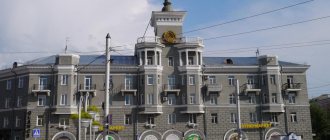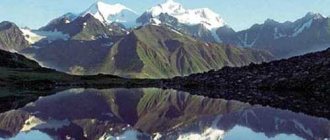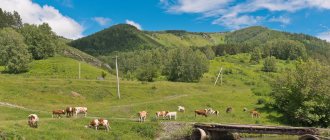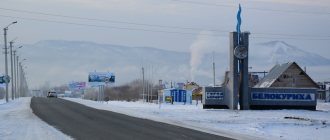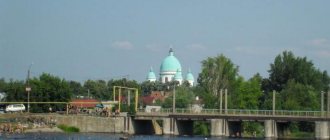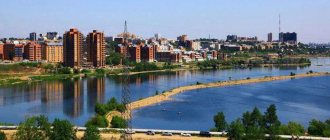The Altai region is simply a magical place, captivating with its pristine beauty and incredible natural reserves. Hundreds of thousands of tourists come here every year not only from Russia and the former Soviet republics, but also from foreign countries, where the healing power of the Altai land is legendary. Many tourists stay at numerous tourist centers for their holidays, but others prefer to live in cities. It is the most famous cities of the Altai Territory that became the topic of this article.
Altai Territory: description
If you have never come to Altai, we advise you to do so as soon as possible. The energy of these places has been considered beneficial since ancient times. Historians and local historians call the Altai region a treasury of the country, where almost all natural areas are collected. Here you will find mountains, plains, steppes and even tundra. There are only a few places like this on the entire planet. The indigenous inhabitants of Altai believe that their region is special, and it can indeed present many mysteries. This is where most of the anomalous zones are located, and shamans can tell a lot of incredible stories related to the spirits of these places who still live on earth.
Incredibly, seventeen thousand rivers flow through the Altai lands, and thirteen thousand large lakes with the purest water are the pride of the region. Many cities of the Altai Territory are as original as the nature of this region. They can compete in beauty with recognized world capitals and provide tourists with a high level of comfort. In addition, each of the major cities in this area has its own characteristics.
List of cities in Altai Krai
There are twelve cities in the Altai Territory, of which ten are of regional importance, and two are of regional importance. The majority of the region’s population lives in them (almost 56%). The largest cities: the capital Barnaul, Novoaltaisk, Rubtsovsk, Kamen-on-Obi, Biysk, Zarinsk. Altai region is a fertile land. Recently, new tourist areas have appeared. The region offers appropriate infrastructure for vacationers.
Barnaul - regional center
Since 1937, Barnaul The city is located in the southern part of Western Siberia, where the Barnaulka River flows into the Ob. More than 670 thousand people live in Barnaul. The large cultural, educational and industrial center has 5 theaters, several state universities, and museums. Interesting architectural monuments of the 18th-20th centuries adorn the city.
Barnaul has a developed transport system. There are many catering outlets and shopping malls. The airport is 17 km from the city. Before the war, Barnaul was an agricultural town, and then in a matter of years it became the industrial center of Siberia. This affected the environmental situation of the entire Altai Territory. The climate of Barnaul is sharply continental. Here the winters have little snow and are quite severe, and the summers are warm.
Climatic and geographical features determined the vegetation of Barnaul. It is characterized by the features of the southern forest-steppe subzone. Various cereal, steppe, floodplain-meadow and forest species of flora grow here. Along the beams grow forests of birch and aspen, which alternate with undergrowth of caragana and rosehip. The magnificent ribbon Barnaul forest lies on the hollow of an ancient drainage. Here you can find almost three dozen species of various woody plants. Bird cherry, poplar, willow, and honeysuckle grow abundantly along the river banks.
Urban development with artificial plantings - parks. There are several of them in Barnaul, including an arboretum. The decoration of the city is the boulevards and squares, which are located near public buildings and along the main streets. Green spaces: poplars, maples, birches, spruces, rowan trees, apple trees help cleanse the city air from industrial and technical emissions.
Large cities of Altai Territory
Biysk arose as a fortress by decree of Peter the Great. This was in 1709. The city, the second most populous in the Altai Territory, is home to the administration of the Biysk region. At one time, Biysk received the title of science city and still bears it with pride. The city is called the cultural capital of the Altai Territory. Having celebrated its three hundredth anniversary, Biysk still symbolizes the gateway to the resort region. All mountain tourist routes start from here. Guests of Biysk will be able to see many architectural monuments. There are more than 270 of them here. There are remarkable archaeological sites, over 5 dozen archaeological monuments, and more than a dozen natural monuments. Biysk is part of the Union of Historical Cities of Russia.
Zarinsk is the center of the Zarinsky district. The city appeared as a result of the formation of the Altai-Koks OJSC enterprise here. The plant exports products to various countries in Europe, Asia, Kazakhstan, and India.
The city of Kamen-on-Obi is located a little over two hundred kilometers from Barnaul. 44 thousand people live here. There is a railway station of the same name. There is a river port. There are several rural settlements subordinate to the city.
Novoaltaysk is the center of the Pervomaisky district. The city ranks 4th in terms of population in the Altai Territory, located on the right bank of the Ob, in the forest-steppes of the West Siberian Lowland. It has a dry continental climate. Most of the precipitation falls during the warm period. Only 12 kilometers separate Novoaltaysk from Barnaul.
Rubtsovsk ranks 3rd in the Altai Territory in terms of population. More than 147 thousand people live here. The city has a developed industry, which affects the environmental situation. The proximity of the Semipalatinsk training grounds also does not add to the attractiveness of Rubtsovsk in the eyes of guests. The transport system is represented by buses, trolleybuses, minibuses and several taxi services.
Various enterprises were evacuated to Rubtsovsk during the war. Gradually the city became the industrial center of the southwest region. Today, many Soviet-era enterprises have gone bankrupt, which has affected the city's economy as a whole. But the cultural development of Rubtsovsk continues. There are two theaters, an art gallery, higher educational institutions, and several vocational schools. It is known that residents are partial to amateur performances. There are many creative groups, ensembles and performers in Biysk.
Altai region for tourists
Despite the environmental situation in the developed cities of the Altai Territory, the region remains attractive for tourists. The nature here is amazing. For connoisseurs of “hiking” tourism, these are stunningly beautiful places. There are many sunny days, clear mountain rivers, healing springs and mud. Mysterious caves with underground beauty conceal their potential for exploration.
Fans of fishing will enjoy spending time on the lakes. There are many bodies of water for swimming in the Altai Territory. New tourist areas offer high-level service. Every year more and more funds are invested in tourism development. Landscapes and the uniqueness of local culture are “tricks” that are valuable in the eyes of foreign guests.
Cities of Altai: general characteristics
Without exaggeration, the cities of the Altai Territory can be called ancient human settlements. Many of them were formed in places where shamans and local residents lived thousands of years ago. This fact speaks of the incredibly beneficial energy of these settlements, because our ancestors knew how to choose places to live from the point of view of energy fields and were never mistaken in their choice.
Now there are eleven large cities in Altai. We will tell you about four of them, because they are more known to our compatriots than others (they are arranged in descending order of number of inhabitants):
- Barnaul;
- Biysk;
- Rubtsovsk;
- Slavgorod.
The difference between the population of Barnaul, which tops our list, and Slavgorod may surprise anyone. Judge for yourself - 652,000 people and 32,000 people. Moreover, the cities of the Altai Territory for the most part have a small population, despite the well-developed infrastructure and industry of the region.
Content
- 1 Largest cities 500 thousand - 1 million people 1.1 Barnaul
- 2.1 Biysk
- 3.1 Novoaltaysk
- 4.1 Yarovoe
City of Barnaul (Altai Territory)
Barnaul is the capital of the Altai Territory, this explains the large number of residents of the city. We could talk about this center of the region for quite a long time, but we decided to collect several interesting facts that most clearly characterize Barnaul:
- ancient people settled on the site of today’s capital; their sites were found by archaeologists in large numbers;
- the official founding date of the city is 1730, when a delegation led by a merchant arrived in these territories to build a metallurgical plant;
- the city's infrastructure is very well developed, it even has its own modern airport;
- The Demidov plant served as a kind of testing ground for a mass of inventions that managed to give impetus to the development of industry;
- on the territory of today's Barnaul, more than fifteen different nationalities lived at different times;
- at the beginning of the nineteenth century, the average wealth of the city's population was so high that their houses often had more than twenty-six rooms;
- at the end of the twentieth century, fabrics from Barnaul participated in prestigious French exhibitions;
- The city became the birthplace of an extraordinary drink - milk champagne.
Barnaul has always been the cultural center of Siberia and the Far East; the first libraries, theaters and museums were opened here. We can say that even now the city holds the lead among all other settlements of the Altai Territory in terms of the standard of living of the population and infrastructure development.
Barnaul is the largest city in the region
Barnaul is located on the left bank of the Ob River. 27% of the population of the entire region is concentrated here. In 2009, natural growth was observed for the first time in many years. More than 89% of the residents are Russian-speaking; other nationalities also live in Barnaul:
- Germans;
- Ukrainians;
- Tatars;
- Armenians;
- Belarusians.
Today, the main increase in population growth is due to incoming young people who arrive in Barnaul to study from small towns, villages, and villages. The city has institutes, academies, and universities.
Wages here are low, but prices for food and utilities are high. This is why some people work two jobs, while others leave their native Barnaul in search of higher salaries. Local residents work in factories and in trade. It doesn’t matter what the environmental situation is because of industry; some rivers are polluted.
There are many religious communities in this city; the highest percentage of Barnaul residents consider themselves Orthodox. There are Lutheran, Catholic, and Muslim communities here.
Biysk city, Altai region
Biysk is often called a science city; it ranks second in terms of population and amenities after Barnaul. Its population is 219,000 people.
The city is already more than three hundred years old, and it was one of six settlements built by the personal decree of Peter I. Initially, Biysk was built as a defensive structure and only a few years later began to grow with civilians.
Everyone who dreams of visiting the Altai mountains comes here. All routes to Mongolia begin here, because Biysk is the starting point of the Chuisky tract, which is a kind of trade route connecting the two countries.
The city has a lot of educational institutions (more than fifteen universities); people from nearby villages come here to get an education.
Urban settlements
- Southern
Population 19,693 (2020).
- Talmenka
Population 18,933 (2020).
- Siberian
Population 12,142 (2020).
- Blagoveshchenka
Population 11,390 people (2020).
- Steppe Lake
Population 6,262 (2020).
- Raspberry Lake
Population 2,952 (2020).
Rubtsovsk: characteristics of the city
The city of Rubtsovsk (Altai Territory) appeared on the map of the country at the end of the nineteenth century, only then did it have the status of a village. Only in the twenties of the last century the village turned into a city and began to grow significantly. This was facilitated by the convenient location of the settlement, because residents of Rubtsovsk enjoy sunny days as much as residents of Crimea. Amazing statistics, isn't it?
The city is the third largest in the Altai Territory, but at the same time one of the worst settlements from an environmental point of view. A large number of factories have turned it into something smoky and dirty. And the presence of a nuclear test site dangerously close suggests an undesirable presence in the vicinity of Rubtsovsk.
Rubtsovsk is a former mechanical engineering center
Among the Altai steppes, on the left bank of the Alei River stands Rubtsovsk. It used to be a major mechanical engineering center, before the collapse of the USSR. It is the administrative center of the Rubtsovsky district, which it is not part of. The name of the city was given in honor of the peasant Mikhail Rubtsov, who was a migrant. Until 1991, the local population grew, but then gradually began to decline, a problem that continues here to this day. Gradually, by 2009, natural population growth began to increase. The number of inhabitants is decreasing, but not as much as before.
The main reasons why people leave are the lack of jobs and low wages, although specialists are always welcome at enterprises and they can receive decent pay for good, qualified work. Local residents of Rubtsovsk work at local factories, industrial enterprises, and in trade. Since 2009, there has been an increase in migrants from villages and small towns. People come to get a job and study. Many remain permanently. The number of marriages has increased and there are fewer divorces, which is also very encouraging.
Slavgorod: a city next to the pink lake
The city of Slavgorod (Altai Territory) was formed only at the beginning of the twentieth century. It has a surprisingly harmonious layout, this is due to the lands on which it is built. The steppe gave great opportunities to the builders, because they were able to build a city that was symmetrical and geometrically correct.
Slavgorod is surrounded on all sides by lakes, most of them salty. Scientists attribute this fact to groundwater and chemical elements in the soil. Two large lakes, Maloe Yarovoe and Bolshoye Yarovoye, have a supply of healing mud and do not freeze even in severe frosts.
Burlinskoye Lake, which is part of the territorial borders of Slavgorod, presents an incredible and fabulous picture - its shores are bright pink, and the water itself at times takes on a deep crimson hue. This is due to the large salt deposits covering the bottom of the lake. It has been mined here since time immemorial.
Each city in the Altai Territory is good in its own way, so when you come to these blessed lands, visit at least one of them. And you will immediately be imbued with the spirit and energy of these ancient mysterious places that make people happier.
Novoaltaysk - a city of a better future
Novoaltaisk is located on the right bank of the Ob River. The city is divided into two banks by the Chesnokovka River. City status was assigned to Novoaltaysk only in 1942. Local residents love their hometown very much for its stunning nature, cozy and beautiful streets. In terms of living standards, Novoaltaysk even surpassed Barnaul and was recognized as the most comfortable place to live in the entire Altai Territory. More than 70,000 people live in Novoaltaysk in the period from 2006 to 2012. there was a population decline.
Today it is a city of young and talented. Local authorities pay a lot of attention to the development of youth and their future. Residents have museums, a cultural center, entertainment facilities, and children and students receive a good education. Everything is aimed at ensuring that people do not leave their native lands and stay to work here.
The economy of Novoaltaysk is developing due to its proximity to Barnaul. It is connected with this city by cultural, economic and industrial ties. The developed industrial sector and good geographical location make it an important railway junction in the Altai Territory.
The ecological situation is not very favorable, local rivers are polluted, engineering structures have been built on the banks, and rubbish heaps are not uncommon on the city outskirts. This negatively affects the quality of the local ecology.
General information about the Altai Territory
The land of a thousand lakes, the land of caves and springs.
A place where endless steppe expanses mix with thickets of forests, turn into the blue of mountain peaks and dissolve behind the smoky horizon in the huge sky. Being the heart of the Eurasian continent, the Altai region is rightly named by UNESCO as one of the best places on Earth for recreation and living. A place with an abundance of natural zones in Russia, glorified by Vasily Shukshin in his work, sacred Siberian Shambhala. In addition to mechanical engineering, which is the leading industry in the region, agriculture is widely developed, and the Altai Territory ranks first in the production of environmentally friendly products in Russia. The favorable climate, natural healing resources and the dazzling beauty of the Siberian pearl led to the development of the tourism industry, sports and entertainment recreation and medical and health institutions.
Unfortunately, at the moment the unique ecology of the Altai Territory is rapidly deteriorating. This is mainly due to the heavy and chemical industries that form the basis of the region's economy, as well as the use of a nuclear testing site near Semipalatinsk. At the same time, it is planned to create numerous reserves, wildlife sanctuaries, national parks, and natural monuments.
Emerald forests of Altai
Geographical location
The Altai Territory borders in the northern part with the Kemerovo region, as well as the Novosibirsk region, with which it is connected by the blue thread of the Ob River. In the southeast - with the Altai Republic, and in the south and west with Kazakhstan, from which it often receives gifts from Baikonur in the form of fragments of rocket stages and the remains of rocket fuel in the air. Plains and mountains...in general, the entire Altai region resembles a hill that increases from northwest to southeast.
There are many caves on the mountain slopes; in some, scientists even find traces of the existence of ancient man. Of the 11,000 lakes in the region, the slightly saline Kulundinskoye Lake (600 km2) is considered the largest. Locals even call it the Altai Sea. It is famous for its mineral waters, healing mud, unique pine shores and sandy beaches. Forest areas are also quite common, among which there are fantastically beautiful ribbon forests.
Kulunda Lake
Administrative division
The Altai Territory has a standard system for Russia of administrative and territorial structure by district, which ensures the legal integrity and efficiency of regional management. Particular attention is paid to cultural, everyday and national traditions to create comfortable living conditions for ethnic groups belonging to small nations.
The total population of the region is 2.4 million people. In the structure of the national composition, Russians have an absolute majority (94%). The remaining 6% are Altaians and other national minorities (Germans, Tatars, Ukrainians, Belarusians, Kazakhs).
Population
The population of the Altai Territory is 2,398,750 people, most of whom (55.49%), as one would expect, live in cities. Thanks to the vast Siberian expanses, the population density is only 14.28 people/km2. For comparison, the population density in the Leningrad region is 20.87 people/km2, and in the Moscow region it is as much as 158.82 people/km2.
Despite the fact that the birth rate began to increase since 2007, unfortunately, at the moment the population growth rate remains negative. Most likely this is due to the desire of people to live in cities with over a million people, where opportunities for career and growth are much higher. Most of the population (86.79%) are Russians.
